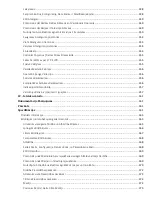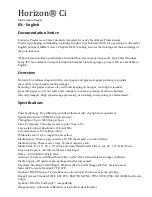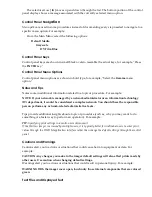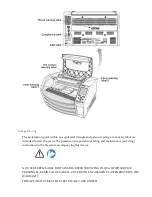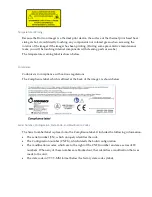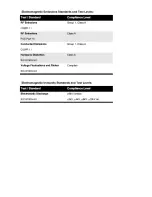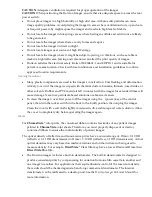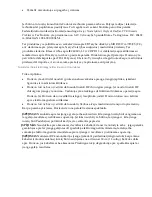
CAUTION
Adequate ventilation is required for proper operation of the imager
CAUTION
When positioning the Horizon Imager, ensure there is adequate space to access the rear
power switch.
•
Do not place imager in a high humidity or high dust area. Airborne dirt particles can cause
image quality problems. Avoid placing the imager in areas where ventilation ducts, open doors,
or frequent passers-by might expose the imager and media to high levels of debris.
•
Do not locate the imager in hot-springs areas where hydrogen sulfide and acidic ions are likely
to be generated.
•
Do not locate the imager where there are oily fumes and vapors.
•
Do not locate the imager in direct sunlight.
•
Do not locate imager near sources of high RF energy.
•
Do not locate the imager where it might be subject to jarring or vibrations, such as a table or
desk in a hightraffic area. Jarring and vibrations can affect the print quality of images.
•
Horizon satisfies the electrical safety limits of IEC60601-1 and CISPR 11 and is suitable for
patient care area location. Check with local ordinances and installation guidelines to confirm
approved location requirements.
Cleaning Precautions
•
Many plastic components are used in the imager’s construction. Coat flecking and deformation
is likely to occur if the imager is wiped with chemical dusters, benzene, thinners, insecticides, or
other solvents. Rubber and PVC materials left in contact with the imager for extended times will
cause damage. Never use petroleumbased solutions or abrasive cleaners.
•
To clean the imager cover, first power off the imager using the (power) key at the control
panel, then turn the rocker switch in the back to the
0
(off) position, then unplug the imager.
Clean the cover with a soft cloth slightly moistened with a mild soap and water solution. Allow
the cover to completely dry before operating the imager again.
Media
For
ChromaVista
®
color prints, the consumed ribbon contains facsimiles of any patient images
printed to
ChromaVista
color sheets. Therefore, you must properly dispose of or destroy
consumed ribbon to ensure the confidentiality of patient images.
The optical density of reflective and transmissive prints have a nominal range of: Dmin = 0.10 OD
(reflective), 0.11 OD (transmissive) to Dmax = 2.10 OD (reflective), 3.1 OD (transmissive). Actual
optical densities may vary based on media variations and on the instrument being used to
measure density. For example,
DirectVista
®
Clear film may have a lower Dmin and Dmax than
DirectVista
Blue film.
•
The Horizon imager includes a built-in densitometer. The built-in densitometer is designed to
produce consistent prints by compensating for variation from one film cassette to another and
one imager to another. For applications that require absolute control of the maximum density,
the results should be checked against a bench-top commercial densitometer. The internal
densitometer can be calibrated to a desktop unit. See the
Horizon Imager Technical Manual
for
more information.

